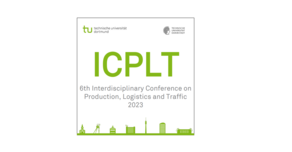RailDisSim - Rail Disturbance Simulation
- Projects
- Current Projects
- Transport Modelling and Process Planning
Background
In the ongoing discussion about the future of freight transport, shifting cargo to rail plays a key role due to its advantages in terms of environmental impact, traffic reduction, economic efficiency, and safety. However, this modal shift has stagnated within the EU — partly due to an increasing number of construction sites resulting from the urgently needed infrastructure expansion. Against this backdrop, a pressing question arises: how can it be ensured that the goods already being transported by rail remain on this mode and do not shift back to road transport due to disruptions or uncertainty?
This challenge becomes particularly apparent in Combined Transport (CT), where freight moves through various nodes such as container terminals and across different modes of transport, including road, rail, and waterways. Multiple actors — shippers, freight forwarders, operators, railway companies, and terminal operators — work together to ensure efficient transport chains. However, rapid replanning becomes necessary in the event of an operational disruption on the rail network. Typically, two options are available: rerouting via an alternative rail corridor or switching to road transport. In practice, the decision favoring road transport is often made due to a lack of sufficient information sharing among the stakeholders — even when a rail detour might be more efficient from an economic, environmental, or social perspective. Inadequate information availability hampers informed decision-making and can lead to inefficient and potentially detrimental outcomes for the entire CT system.
Approach
In the project's initial phase, stakeholders' decision-making behavior in response to operational disruptions will be analyzed. Key factors influencing the choice of rerouting and the associated mode of transport — such as limited or missing information — will be identified. This will be achieved through literature reviews and expert interviews.
The findings and data from catkin’s various systems will serve as the foundation for building a weighted utility function, reflecting the prioritization of influencing factors by decision-makers.
The project's primary outcome will be the development of a functional simulation model for modal shift decisions under operational disruptions. The model will incorporate three rerouting options: alternative rail routes, a shift to road transport, or rerouting via an alternative terminal — allowing goods to remain on rail.
Finally, practice-oriented recommendations for the industry will be derived to handle operational disruptions better.
Project Goal
The research project aims to develop a decision-support tool for stakeholders involved in mode choice within Combined Transport. The simulation model will incorporate various rerouting options while allowing for dynamic adjustment of information availability and influencing factors, which can be weighted and prioritized in decision-making. This will generate a broad range of simulation scenarios, enabling a realistic depiction of potential rail freight and combined transport decisions.
The project aims to develop actionable solutions to address challenges in rail freight and Combined Transport by analyzing these scenarios and identifying optimization potential in managing operational disruptions.
Funding and Partners:







